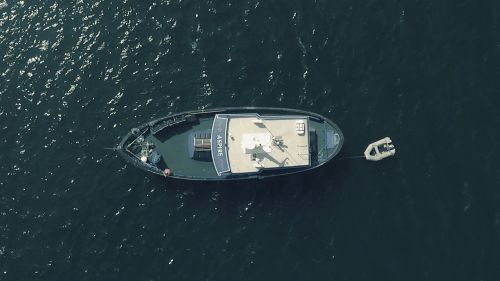Offshore Computer - Rugged Computer
Maritime & Offshore
![]()
Hectronic has developed and supplied embedded computers to maritime and offshore customers for many years. This area of use often involves harsh environments and equipment therefor needs to be designed accordingly to ensure safety at sea. Marine certification is defined by the IEC60945 and IACS E10 standards.

Offshore Computer - Rugged Computer
EMC
Marine VHF radio is crucial for safety. It’s one of the main means for communication on an emergency situation at sea. It also plays a vital part in everyday work through communication with other ships, customs and when arriving ports all over the world.
The importance of marine VHF radio has an impact on EMC requirements. The red graph below shows the electromagnetic field limit values as a function of the frequency. The frequency band with stricter requirements is the one used by VHF radio.
Hectronic’s engineers commonly use strategies like clever board layout and routing, filters, ground planes and shielding to reduce electromagnetic interference. In this case one particular method was used to avoid electromagnetic interference on critical frequencies.
The blue graph shows electromagnetic emission from a marine computer developed by Hectronic. There are a couple of characteristic triangular peaks in the graph and particularly the peak at 185,5MHz is worth noticing. It was placed at that particular frequency by Hectronic engineers from the component choices made in the power circuitry of the system. The peak and the overtone at 370MHz are internal frequencies from the voltage regulators. By selecting components to control at which frequencies the peaks appear interference with VHF radio was avoided.

Offshore Computer - Rugged Computer
Temperature
The required operating temperature range is from +5°C up to +55°C or +70°C for equipment indoors in control rooms, on the command bridge or in sleeping quarters. Stricter requirements apply for equipment used in for instance pump rooms and the strictest class marine of computer product requirements for operating temperature, from -25°C to +70°C, are applicable for equipment mounted on the ship deck and in masts.
Mechanical engineers at Hectronic use computer based flow simulation to identify hotspots and critical temperature areas at an early stage in the development project. The goal is to make sure that the design will meet the operating temperature requirements prior to manufacturing the first prototypes. The procedure involves the building of a 3D model based on the mechanical design and data about components that generate the more heat.
The result of the simulation (picture above) shows the air flow, temperature zones and hot spots and their respective temperatures. The data is basis for adjusting the design. Iterative simulations and design adjustments are made until the result is satisfying. Further testing in real life is performed on prototypes in the climate chamber at the development center in Uppsala, Sweden.
Shock and vibration
Maritime and offshore environments are typically suffering from shock and vibration more than the common industrial environment. Engines, pumps, bad weather and waves are challenging to any onboard equipment.
The forces affecting components are greater when components are large and weigh more. Therefore large components like back-up batteries or large reservoir capacitors may need to be fastened to the board to withstand forces generated by vibration or shock. Memories and storage modules are mounted in sockets and card holders with screws or snap locks for increased fixation.

Offshore Computer - Rugged Computer
Production test
The certification process according to IEC60945 and IACS E10 standards is part of Hectronic’s development projects for our maritime and offshore customers as well as industrialization and maintenance during production. Products are put in production at one of our selected manufacturing partners. We make sure that prototypes and pre-series fulfill the initial requirements and that the quality level is kept in volume production and through the maintenance phase when components change naturally over the years.
The building block strategy has been and is crucial in Hectronics strategy to reduce time to market and increase quality of the maritime and offshore systems we develop for our customers. It means that development of a custom design systems are based on blocks like for example processor platforms, interfaces, power supply circuitry, storage and wireless communication modules rather than developing from scratch. Custom design is therefore more about adaptation and integration than development from scratch.
Our knowledge about computer platforms, boards and systems and your expertise in the application and market ensures a competitive edge to your product. Trust us with the development of your next maritime certified system and stay focused on the application, functionality, marketing and sales of your product.
Apart from solutions adapted to requirements from applications in the Maritime and Offshore sector Hectronic has vast experience from developing custom design embedded computers for customers in the sector.
